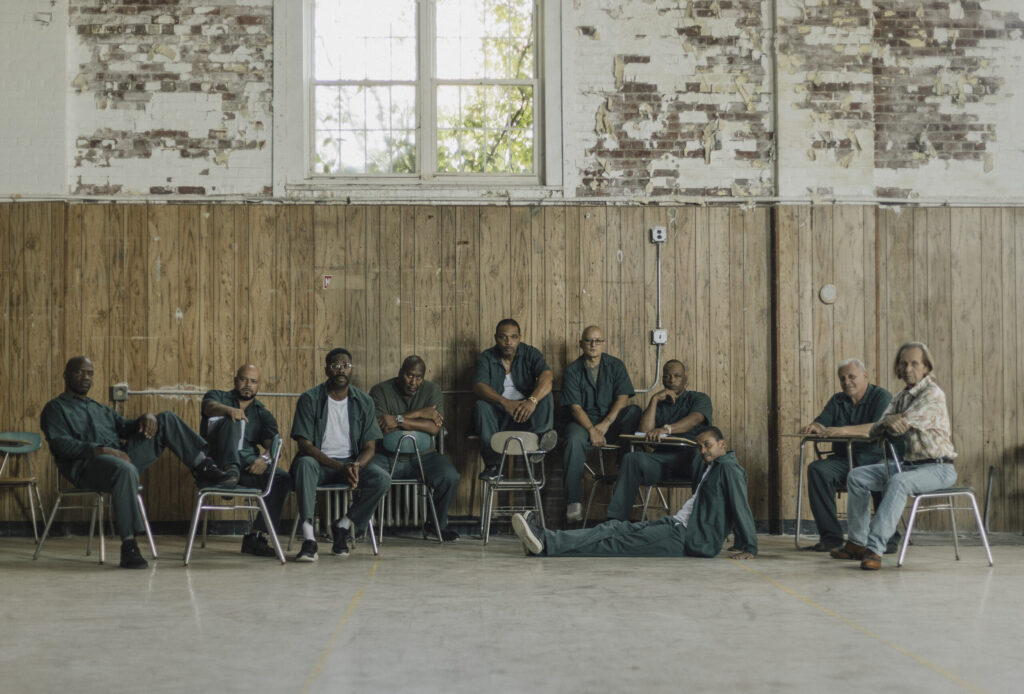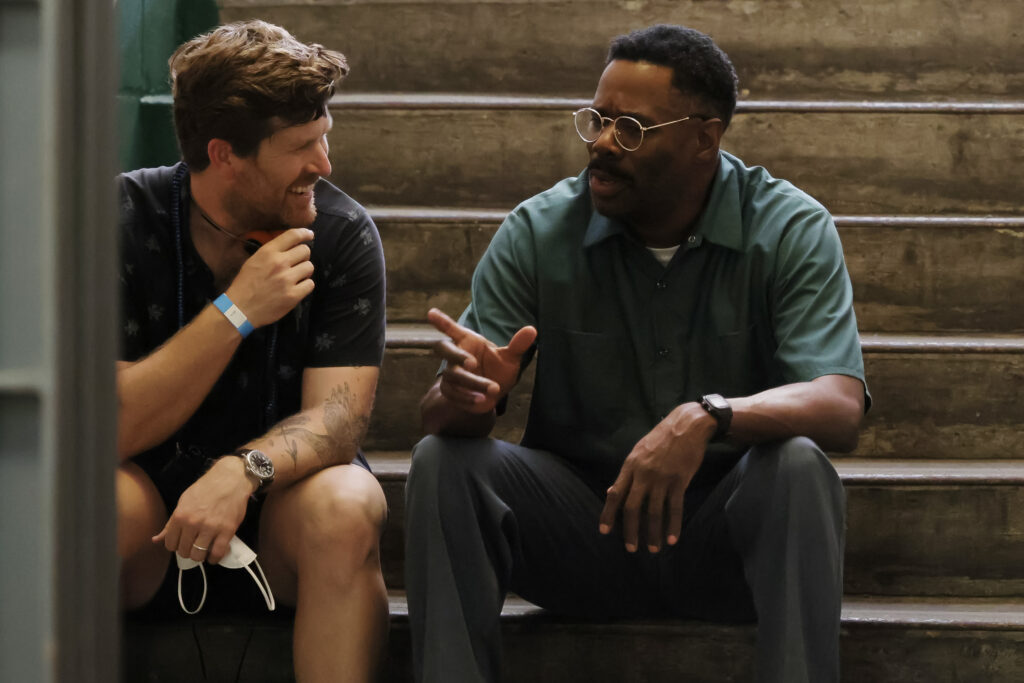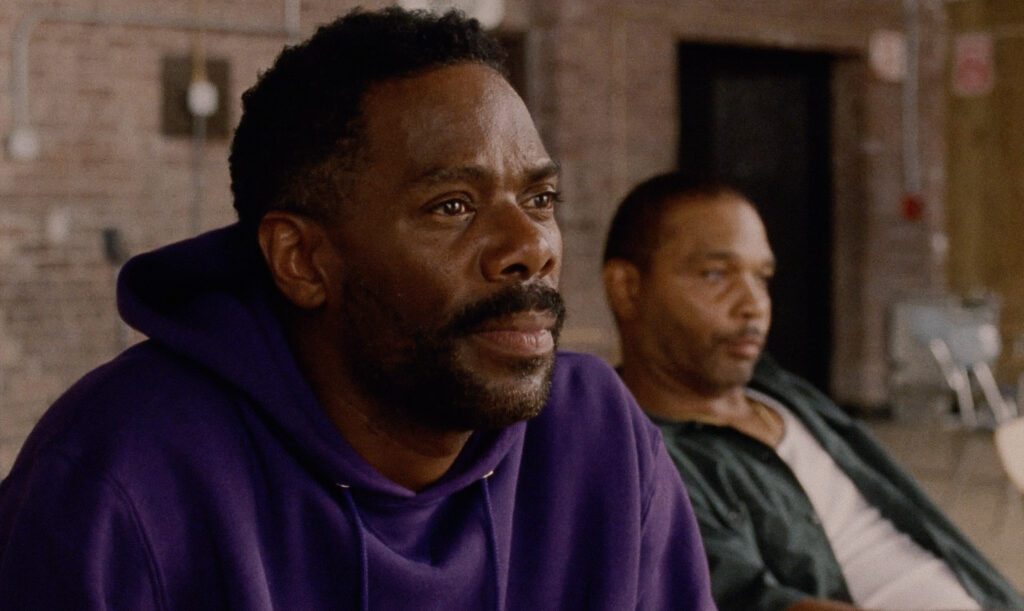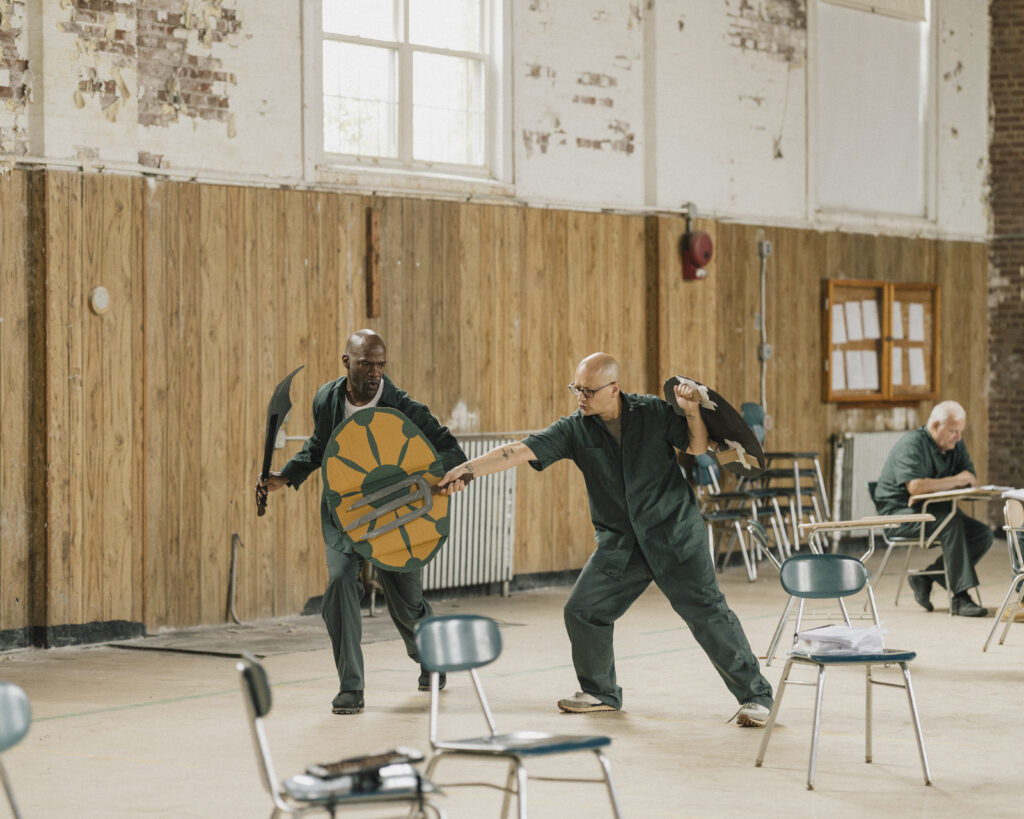Inside ‘Sing Sing’: How a Prison Arts Program Inspired Austin’s Latest Film Sensation
Discover how the latest film by Austin-based director Greg Kwedar, starring Colman Domingo, showcases a prison art program's transformative power

In a city teeming with creative energies, where chance encounters often lead to extraordinary collaborations, the making of the film Sing Sing is a testament to the power of serendipity, shared visions and the transformative magic of storytelling. Sing Sing, released by A24, delves into the lives of incarcerated men in the Rehabilitation Through the Arts (RTA) program at New York’s Sing Sing Correctional Facility who find purpose through theatre. Having already made waves on the festival circuit with its premiere at last year’s Toronto International Film Festival and a win of the Audience Award at SXSW 2024, Sing Sing holds particular significance for Austin, given its deep ties to the local film community and the success its directors have found here.
The film’s producer, Monique Walton, recalls the fortuitous meeting with director Greg Kwedar. “It was an eight-year journey to this moment. I joined the project about six years in after a very extensive development process, and we actually met by chance,” Walton shared. During the pandemic, Kwedar was looking for an office to sublet, and Walton, along with her creative partner Annie Silverstein, needed someone to sublet their space. The Austin Film Society connected them, and from that point on, a collaborative partnership blossomed.
Around a campfire, typical of Austin’s creative scene, Walton and Kwedar discovered their shared values and visions for filmmaking. “We make films in a similar way. We like to tell stories that are in collaboration with the community,” Walton noted.
From its inception, Kwedar and his team aimed to bring authenticity to the screen by involving RTA alumni. “There’s a presence that’s hard to quantify when you meet someone like many of these men and that’s both charm and charisma and all that, but also their depth, availability, and vulnerability to express their true selves, which is something we don’t see often,” Kwedar explained.

The making of Sing Sing
The journey to create Sing Sing began eight years ago for Kwedar and his co-writer, fellow Texan Clint Bentley. As they awaited the premiere of their acclaimed film Transpecos at SXSW in March 2016, Kwedar assisted a friend with a short documentary in a maximum-security prison in Wichita, KS. During a walkthrough, Kwedar observed a man in his cell raising a rescue dog, part of a dual rehabilitation program for both inmates and animals. “My whole world flipped upside down, just in that half-second, passing a cell,” Kwedar recalls. This impactful experience spurred him to explore who was doing things differently in prison, leading him to discover the RTA program, which boasts a remarkable success rate: less than 5% of its graduates return to prison, compared to the national average of over 60%.
Intrigued by the transformative potential of RTA, Kwedar delved deeper and came across a 2005 Esquire article titled “The Sing Sing Follies” by John H. Richardson. The article detailed a time-traveling musical comedy, “Breakin’ the Mummy’s Code,” performed by the men at Sing Sing through RTA.
“There was something about the seesaw of the tone—threading the needle of the inherent drama of that difficult environment, experiencing significant human transformation, juxtaposed with the playfulness of a wacky comedy. I thought that perhaps this might be the right jumping off point to tell a story that gives people a deeper understanding about the full capacity of some of the individuals behind bars who are otherwise stereotyped or forgotten,” Kwedar explains.
Inspired by this blend of drama and playfulness, Kwedar and Bentley immersed themselves in extensive research, connecting with RTA alumni and understanding the profound impact of the program.

The real-life “Divines”
Central to the film are the characters of John “Divine G” Whitfield, played by Oscar-nominated Colman Domingo, and Clarence “Divine Eye” Maclin, who portrays himself.
Whitfield, a man wrongfully convicted and imprisoned for decades, found solace and purpose through writing and participating in RTA. After joining the program in 1995, Whitfield immersed himself in the group, writing novels and numerous plays, many of which were performed by RTA over the years.
Maclin, once one of the most feared men in Sing Sing, found a new path through the theatre program. A chance encounter brought him to the prison chapel on a rainy day, where he witnessed a play called Slam. Intrigued by the freedom of expression he saw, he recalls, “I could see guys up on this stage, with the freedom to express themselves… In population, we’re not free to do that.” Captivated by this opportunity, Maclin immediately signed up for the RTA program.
Authenticity at its core
The filmmakers were committed to authenticity, casting over 85% of the film’s roles with formerly incarcerated individuals who had participated in RTA. This decision was not just philosophical but practical, recognizing the immense talent and pathos of the RTA alumni.
Kwedar and Bentley worked closely with RTA alumni like Whitfield and Maclin, integrating their real-life experiences into the screenplay. “We met the Divines, and our lives were changed,” says Bentley. “I was struck immediately by how magnetic each was in their own distinct way. Divine G has an intensity and focus, the kind of person who doesn’t waste a second of their life. And Clarence has this unstoppable charisma and profound wisdom from a life of hard-earned lessons.”

The unique filmmaking process
The filming process itself was a transformative experience for all involved. The filmmakers adopted a community-based financial model, where every cast and crew member was paid equally and shared in the film’s financial success. This approach fostered a collaborative and egalitarian environment on set.
The film was shot on location in upstate New York, including the decommissioned Downstate Correctional Facility. Despite the challenges of filming in a real prison, the team was committed to capturing the authenticity of the environment. “It’s a very heavy place,” producer Monique Walton recalls. “The air is dead in there. You could just feel, within the walls, the intensity of the place.”
At its core, Sing Sing is a human story about the bonds formed through shared experiences and the redemptive power of art. Divine G, finds purpose and liberation through the theatre group, alongside other incarcerated men. This narrative thread of friendship and community is beautifully captured in the interactions between the characters, many of whom are played by RTA alumni themselves.
A journey of resilience and hope
Sing Sing is not just a prison story; it’s a human story. As Domingo, eloquently states, “It is a triumphant story, of course and determination, of fighting against a system that’s broken. We all have choices we make—every day—to try to be better, to go to our better angels. That’s what this film is about, ultimately.”
Sing Sing is set to be released in Austin on August 9, offering audiences a poignant look into the lives of men who have found a way to transcend their circumstances through the power of theatre. The film not only highlights the transformative potential of art but also shows a deeply hopeful and empathetic perspective on incarcerated individuals.
Kwedar hopes the film will resonate widely, underscoring the universal qualities of resilience and community. “If these men inside of this place, Sing Sing, could find community… liberate their minds and their spirits through the artistic process… it can happen anywhere and should,” he stated.
